For PC gamers, 2012 has been the year of big name sequels: Diablo 3, Borderlands 2, and a little game called X-Com Enemy Unknown. To say that anticipation for EU was high would be an understatement: a revival of one of the most prominent PC brands by one of the most highly rated studio around.
This left Firaxis in a position as crazy as defending Earth from aliens: Reviving a brand for both newcomers and those that have been there since day one. And leaving me with the question: Did they succeed?
This is going to be a tricky analysis as I know that I have people who have never played X-Com reading this, and probably a few people who beat the original, ironman style. For me, my exposure to the original was getting as far as fighting ethereals and calling it quits. Having kicked alien ass, and gotten my own ass kicked plenty of times this week, X-Com Enemy Unknown is a great game, but has a few sticking points.
The story of EU is basically a retelling of the original: Aliens have made first contact and not in a good way; leaving you in charge of the X-Com organization to defend Earth from invasion. For those of you who have never played X-Com, you can read my retrospective piece on it to get a cliffs notes version of the gameplay.
As in the original X-Com, EU has the player managing their base, shooting down aliens and taking soldiers out to fight. But Firaxis has made numerous changes to the formula, some good and some not so well to bring X-Com back for today’s audience.
Let’s start with the difficulty, one of the best decisions Firaxis has made to EU was how they set up the different difficulty settings to appeal to different groups of people. In the original X-Com, the game’s settings were different shades of hard and the player was just picking their poison. In EU however, the developer’s wisely split the game’s four difficulty settings for newcomers and expert players.
The four settings are: easy, normal, classic and impossible. The former two are meant for people learning the game or who want an easy time.
And the latter are when the gloves come off. The jump between normal and classic is huge thanks to enemies getting more health and you have to both unlock and pay for troop upgrades among other things.
All four settings can also be played in ironman mode: where you only have one save meaning no reloading a failed mission. Ironman mode provides some of the best tension in the game as you never know when your favorite squaddie is about to die.
Moving on the first thing that all players will experience are the troop battles. In terms of design, this is where the most mechanic affecting changes were made to the formula. First off is that you are now limited to an initial cap of 4 soldiers which can over time be raised to 6. This change makes battles a lot more dangerous as after the first month you’ll be easily outnumbered in each mission.
To compensate, soldiers are more defined this time around. Anyone who survives to their first promotion will be put into one of four classes: heavy, assault, support and sniper. This determines what weapons they can use and what potential upgrades you can assign them as they get promoted further. You can’t give someone everything and you’ll start to notice just how effective some of the late promotion bonuses are for evening out the odds.
In the original X-Com, the tactical gameplay was heavily influenced by CRPG and Pen and Paper design with how all the attributes factored into success. With EU, the designers took influenced from board game design which is similar to what they did in Civilization 5. All units by default can perform two actions per turn, with attacking immediately ending their turn. The name of the game is cover, and how it factors into surviving.
“EU isn’t really a tactical strategy game like the original, but is more of a board game.”
Cover doesn’t work in EU as it does in real life. Here, based on whether the unit is behind low cover or full cover (represented by a half or full shield icon respectively), gives all attacking units an accuracy penalty on that unit. The only ways to get around that is to either destroy the cover with explosives or missed shots, or attack the enemy from their flank which is represented by a yellow shield icon.
As you’ll play and promote your units, you’ll unlock upgrades that can circumvent or change the initial rules. Such as being able to attack twice per turn, or perform automatic counterattacks on enemies in close range. Personally while I like the concept of cover, it is part of my main complaint about EU which I’ll be coming back to further down.
Ant Farm Alien Busting:
For those hoping to continue their base building from the original X-Com, Firaxis has changed how you go about building your organization. Instead of building bases around the world, you only have one base this time around, but there is a lot more depth to managing it.
Your base is viewed for the side or like staring at an ant farm, at the start, the first layer of the base is available to build structures. You can expand your base deeper into the ground by constructing access lifts, but this will cut into your monthly profit. Besides money, you are limited by power, requiring you to continue expanding your power supply as you build.
Scientist and engineers are back with engineers a lot more important this time around. The # of scientist working for you affects research time as before. But engineers now affect how much manufacturing things cost and act as a gating mechanic behind building more advanced items. Laser rifles for example require at least 12 engineers before you can make them.
Satellites replace the need to build bases around the world for detecting aliens. You have a choice as to what countries to watch, which for each satellite will increase the funding and bonuses received from that nation. More importantly satellites will lower the panic rating for that nation. If a nation is in full panic at the end of the month, they will drop out of the X-Com project and take their funding with them. If 8 of the 16 nations leave the council, that is considered a game over.
Intercepting UFOs is a little more complex this time around thanks to the satellite mechanic. In order to defend a country that is being monitored, you need to have interceptors (X-Com’s name for attack ships) stationed in the country to go after UFOs.
As in the original, upgrades and research will unlock better weapons and stronger aircraft. Attacking UFOs is still basic, as you monitor the fight from a view screen and give basic orders. The twist is that you can now equip interceptors with one time buffs that can be used during a fight.
What really made both the original X-Com and now EU stand out is the # of choices that are forced on the player. You never have the time or resources to handle everything and some part of your strategy is going to be left behind.
Whether that is not properly equipping your troops in the field, developing your base, or keeping the nations of the world happy is up to you. This forces the player to make difficult decisions that can come back to haunt them, and hopefully using what they have done to turn the tide.
The Story Behind the Strategy:
In my retrospective piece I went over X-Com’s narrative and described it as nonlinear- linear with how the player progresses through the campaign. EU follows a similar pattern but with some major differences to the mission structure.
As in the original, besides surviving missions and keeping the nations happy, you also need to perform specific actions to progress the story, which are kept on the base screen as your current objective. Each month that goes by the enemies do get progressively more challenging but hopefully you are improving your base and resources to match.
One area that has been under scrutiny is having set maps as opposed to randomized. In EU, Firaxis has developed around 80 different maps and have said that you shouldn’t see the same ones in a single play through. I and many other people disagree with that having played the same map several times. The reason is pretty obvious: EU’s cover system would fall apart on randomized maps both for the player and for the AI.
EU does feature more variety compared to X-Com, besides terror missions you’ll sometimes get requests from the council to perform special missions for rewards. These missions are designed to break up the pace from the regular missions and I’m not going to spoil them here.
Overall I like EU, but there are a few design considerations that besmirch the game a little bit.
X-Com the Board Game:
The problems that I have with EU stem from the designers’ overall philosophy for the game. EU isn’t really a tactical strategy game like the original, but is more of a board game. If you’ve been reading forums or are on my Google + feed, you may have heard the description of EU as “gamey”.
What we mean is that there are several decisions and mechanics that remove the tactical and strategic nature of the game for more of a board game like experience. Firstly, how equipment works with how you have different slots on a character. In the original you were free to mix and match a character’s equipment to your heart’s content. In EU however items are limited by some illogical decisions.
For instance: Why can my solider carry an infinite amount of ammo clips, but can only fit one grenade on their belt? Or why a med kit takes up as much space as wearing a vest under their armor?
Base building also has some weird issues. As mentioned above, it seems like the game wants you to amass as many engineers as possible to have any hope of keeping pace with satellite coverage. This effectively forces you down one path as without coverage; you won’t be able to keep panic levels from reaching critical.
One solution would have been to allow you to move satellites to troubled areas but once again the rules of the game prevent it.
Money is also a major pain as it doesn’t feel like you’re getting as much as you should for completing missions without blowing up any aliens. I know that the game is supposed to force you to make tough choices, but when you’re only options are to lose now, or lose later due to the council is just a pain in the ass.
But where I have to draw the line of letting things slide is the cover mechanic. I have several problems with the mechanic and how it commits one of the biggest sins in my opinion of strategy design: it makes the player and the AI play two different games.
Cover seems to grant the AI a greater advantage than the player thanks to the to-hit penalty it provides. You could have an alien surrounded on three sides at close range, but still completely miss due to the rules in effect. Not helping matters is that you can’t easily see which sides the alien is covered from and with only two movement actions per turn can leave you screwed.
Speaking about movement, what has to be the worst part of the tactical gameplay would have to be giving the aliens a movement turn upon detection. Even if the alien is already moving towards you they still receive a free turn.
The reason of course is that the designers had to give the AI a way not to walk into traps and get behind cover. However, by having no recourse but to give the AI such an advantage is a blatant sign of designing a poor AI to begin with. If the player manages to get the drop on the aliens, then why shouldn’t they have an advantage?
What happens is that the player and the AI are playing two different games which is not the point of a tactical game. The player can’t close the gap to flank enemies because the enemies have a higher to-hit chance, meaning that they will take out most soldiers before they get a chance to fire. Or worse, the enemy will move on their turn and flank the attacking solider which is nine times out of ten lethal.
Then you have the moments when you do actually pull off a flank and still miss which happen far too often when you have an 80% chance to hit. I can’t count the # of times when I was killed from 40 feet away in full cover by a critical shot from an alien. Cover works too well for the enemy but the same can’t be said for the player.
There should be ways to either reduce the effectiveness of cover or target it directly without having to resort to one time skills. It’s just too much of a one way advantage for the AI without providing the same benefits to the player.
I have two solutions that would change things dramatically. A simple solution would be to have a cumulative bonus to accuracy for anyone who fires from the same position without moving.
In terms of tactical logic it would be someone steadying their aim to fire more accurately. The other idea would be to add the following abilities for both the player and the AI:
Covering Fire: Guaranteed to hit for no damage, but will counter overwatch.
Keep Your Head Down: Only works in full cover makes the next projectile based attack on the character miss. But will either damage the cover or outright destroy it in the process.
Suppressing Fire: Requires two characters. Locks down the enemy preventing them from moving, firing or going into overwatch for their turn phase.
These abilities would add another dynamic to cover and prevent one unit from effectively stopping a group from advancing thanks to staying in full cover. More importantly they would be shared with the AI requiring the player to adapt the same way and allow both sides to play the same game. And that last sentence is an important part of what made the original X-Com so popular.
In the original, you were of course at a huge disadvantage at the start due to the difference in attributes between your squaddies and the aliens. However your troops improved over time as they continue shooting and eventually high ranked and better equipped troops would close the stat gap.
That doesn’t happen in EU: a sniper still has just as much of a poor chance hitting an enemy in full cover as someone with a laser rifle. Losing a complete squad of your best guys is pretty much a game over as you can’t recoup the money and time easily.
What happens is that the player and the AI are playing two different games which is not the point of a tactical game.
I know that I’m coming down hard on EU and contrary to what I’ve written I really enjoyed the game. Firaxis has done a lot to capture the multi-system progression from the original and adapt it to today’s audience. But when you have a game that is really good, the remaining problems with the design stick out that much more because of it.
At the end of the day X-Com Enemy Unknown compares to the original in my opinion, like Deus Ex: Human Revolution to the first Deus Ex: It’s a game that managed to revitalized a brand by capturing what made the original great in the first place. But it doesn’t invalidate the original which is still amazing on its own.
( Since this piece was written, Firaxis released an expansion called Enemy Within and here is my analysis of it.

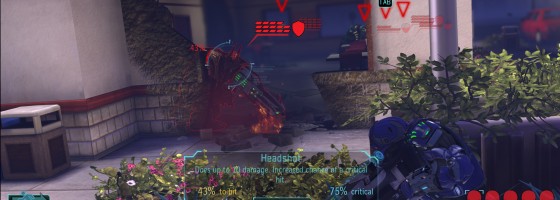
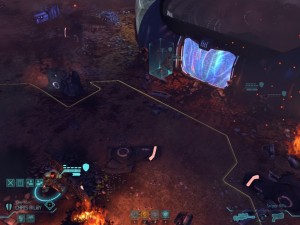
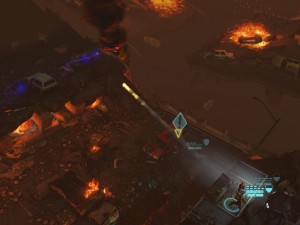
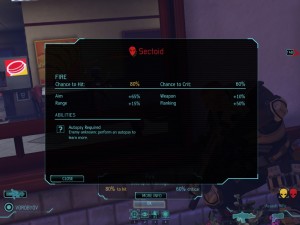
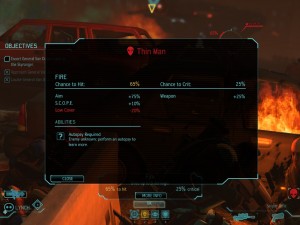
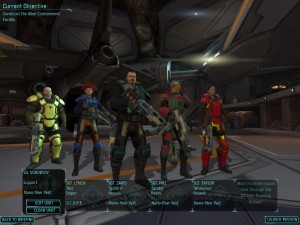

Pingback: XCom: Enemy Within: Stronger, Faster and Somewhat Better | Game Wisdom()